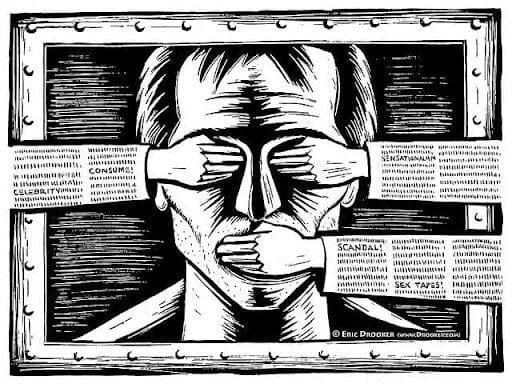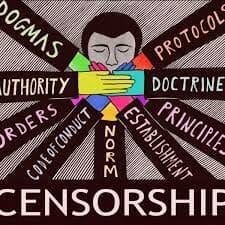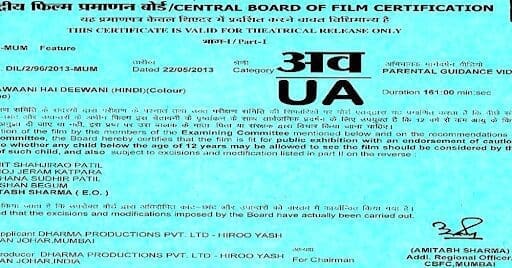
Before getting into Censorship
Given India’s history of communal tensions, the Constitution of India provides freedom of expression but includes certain restrictions on content to ensure communal and religious harmony. Anything that “threatens India’s unity, integrity, defense, security, or sovereignty, friendly relations with foreign governments, or public order,” according to the Information Technology Rules, 2011, is considered offensive content. India had a Civil Liberties Rating of 33/60 in the freedom in the World report published by Freedom House in 2021. India received a 2/4 rating in the subcategories of ‘free and independent media,’ 2/4 in the subcategories of ‘individual’s freedom to practice and express their religious faith or non-belief in public and private,’ and 2/4 in the subcategories of ‘academic freedom, and the educational system’s freedom from extensive political indoctrination. In their 2017 Press Freedom Index, Reporters Without Borders ranked India 133rd. In 2016, Freedom House’s annual freedom rated India’s press freedom as “Partly Free,” with a Press Freedom Score of 41. (0-100 scale, lower is better). Several films have been censored.
Censorship in Press
The press in India does not have a lot of freedom. The Press Freedom Index, issued by Reporters Without Borders, ranks it 140th in 2019. “D.E.M O’Cracy, beloved husband of T.Ruth, father of L.I.Bertie, brother of Faith, Hope, and Justice, passed away on June 26,” read an obituary in The Times of India’s Bombay edition the day after the Indira Gandhi government imposed press censorship during The Emergency in 1975. It was repealed in March 1977, when the emergency rule ended. The Jammu and Kashmir government ordered Kashmir Reader, a Srinagar-based Kashmiri weekly, to cease publication on October 2, 2016. The reason for the ban, according to the Deputy Commissioner of Srinagar Farooq Ahmad Lone, is that the journal contains “material and content that tries to promote acts of violence and disturb public peace and tranquility.”

After the execution of Burhan Wani, the commander of the terrorist group Hizbul Mujahideen (classified a terrorist group by India, the European Union, and the United States), the ban came after weeks of instability in the Kashmir valley. Journalists have condemned the move as repression of freedom of expression and democracy in Kashmir, as part of the central government’s vast media suppression of the turmoil. Working journalists marched to the Directorate of Information and Public Relations to protest the prohibition. At the same time, the Kashmir Editors Guild (KEG) held an emergency meeting in Srinagar, pleading with the administration to immediately lift the ban and requesting the intervention of the Press Council of India. Most of the influential Kashmiri newspapers have also rallied behind the K.R., stating that the action was political retaliation for the newspaper’s coverage of the turmoil as it unfolded on the ground. Hurriyat leaders, who are known for championing the cause of Kashmiri independence, have also expressed their displeasure at the newspaper’s prohibition.
“The government must respect the freedom of the press and the right of people to access information,” Amnesty International, an international non-governmental organization focused on human rights, said in a statement, slamming the government for closing down a newspaper for opposing it. The paper’s journalists argue that, contrary to the J&K government’s statements, they were not given notice or warning and were abruptly asked to cease production, which was just one manifestation of a broader media blackout on Kashmir.
Censorship in Film
The Central Board of Film Certification (CBFC), India’s film regulatory authority, regularly instructs directors to erase anything offensive, such as sex, nudity, violence, or politically provocative issues.
Film censorship is essential because, compared to the printed word, a film encourages thought and action and ensures a high level of attention and memory. The combination of act and word, sight and sound in the semi-darkness of the theatre, without any distracting thoughts, will have a significant impact on spectators’ minds and can affect emotions. As a result, it has the same potential for good as it does for evil, and it has an equal chance of instilling or cultivating violent or harmful conduct.

It is not comparable to other forms of communication. As a result, it has the same potential for good as it does for evil, and it has an equal chance of instilling or cultivating violent or harmful conduct. It is not comparable to other forms of communication. As a result, prior constraint censorship is not
only desirable but also necessary. Anand Patwardhan’s film War and Peace, which depicted nuclear testing and the September 11, 2001 attacks, was required to make 21 edits before receiving a certificate for release in 2002. The court ruled the cuts unlawful, and the picture was shown uncut.
Gulabi Aaina (The Pink Mirror), a film about Indian transgender individuals created and directed by Sridhar Rangayan, was banned by the Indian Censor Board in 2003. The film was deemed “vulgar and offensive” by the censor board. The director filed two appeals, both of which were denied. Although the film is still illegal in India, it has been screened at several festivals worldwide and has garnered accolades. According to critics, it has been praised for its “sensitive and poignant representation of a marginalized community,” according to critics. Final Solution, a documentary about religious unrest between Hindus and Muslims, was banned in 2004. The film is based on the 2002 conflicts in Gujarat, which resulted in the deaths of over 1,000 people. The censor board supported the prohibition, which stated that the film was “extremely offensive and may spark unrest and communal bloodshed.” After a long struggle, the restriction was lifted in October 2004.
The release or display of the Hollywood film The Da Vinci Code along with the book was banned in seven states in 2006 (Nagaland, Punjab, Goa, Tamil Nadu, and Andhra Pradesh) The CBFC, on the other hand, approved the film for adult-watching in India. The respective high courts removed the ban, showing the film in both states.
The CBFC ordered four cuts (three visual and one audio) from the art-house Malayalam feature film Chaayam Poosiya Veedu (The Painted House), directed by brothers Santosh and Satish Babusenan, in 2015, because the film had moments in which the female lead was shown in her underwear. Because the directors refused to alter the movie, it was denied a certificate.
Charlie and the Coca-Cola Company: Quit India, a documentary by Jharana Jhaveri and Anurag Singh, ran afoul of the CBFC in 2015, and the matter has been waiting ever since. The appeal cited 20 unusual objections to the documentary’s publication in 20 pages but did not advise a single cut. The two-hour, twenty-minute video exposes the Coca-Cola companies’ abuse of groundwater, land, livelihoods, rivers, and land laws. The film also holds actors and television producers responsible for transgressing ethical and moral limits in the pursuit of profit over sustainability.
The film Lipstick Under My Burkha, directed by Alankrita Shrivastava and produced by Prakash Jha, was also in trouble in 2017 when the Central Board of Film Certification refused to certify it; citing that it was “inappropriate.” “The plot revolves around the ladies, with their fantasy taking precedence over reality. There are contagious [sic] sexual scenes, aggressive comments, audio pornography, and a delicate touch concerning one segment of society in this film.”
Before its formal release in India, the film was exhibited at over 35 film festivals worldwide and won eleven international honors, eligible for the Golden Globe Award Ceremony. The filmmakers took their case to the Film Certification Appellate Tribunal (FCAT), which overturned the censor board’s verdict and granted theatrical release rights to the film. FCAT asked the filmmakers to make some edits at their discretion, especially in the sex scenes. With some voluntary changes, the picture was released with an “A” or adult certificate, similar to an NC-17 rating in the United States.

Be the first to comment